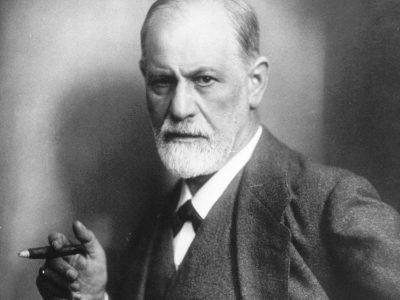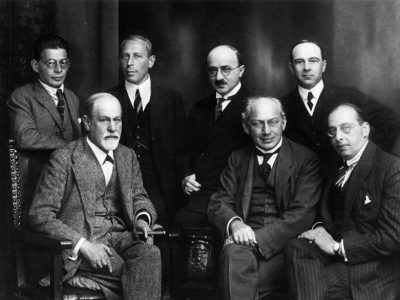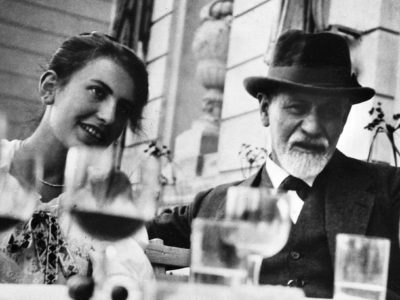Session 1: In Freud’s time – as in our own – there were two opposed views of dreams: that dreams are a purely physiological phenomenon – due to the random firing of neurones during sleep – and that dreams have a meaning. Freud’s view of the nature and function of dreams had its roots in the theories he learned while training as a neurologist – and we will examine the neurological model of the ‘mental apparatus’ he developed in his ‘Project for a Scientific Psychology’ (1895). This model underpins his central idea that every dream represents the fulfilment of a wish – but this hypothesis is only one aspect of his approach to dreams. The other – equally important – aspect is the practical method for interpreting dreams which came directly from his clinical work with his patients. We will therefore explore how Freud arrived at the practice of ‘Free Association’, which he later called the ‘Fundamental Rule of Psychoanalysis’, and insisted was the key to dream interpretation.
Session 2: Bringing these two aspects together, Freud states in ‘The Interpretation of Dreams’ that every dream represents the fulfilment of a wish – but that in most dreams dreamt by adults, the wish in question is deeply repressed, so the wish-fulfilment is heavily disguised in the dream as we experience and remember it. The core of Freud’s theory, therefore, lies the distinction between the dream’s ‘Manifest Content’ (the dream as we remember it) and its ‘Latent content’ (the hidden meaning, revealed by the process of interpretation), and in his account of the DREAM WORK – the processes that disguise the true meaning of the dream, producing the dream we remember. In this session, we will study in detail the processes that constitute the ‘DREAM WORK’, illustrating these with examples from ‘The Interpretation of Dreams’.
Session 3: In this session we will study the subtle and complex examples of dream interpretation provided by Freud in his masterpiece – beginning with a detailed examination of the dream of ‘Irma’s Injection’ – perhaps the most famous dream in psychoanalysis (one of Freud’s own, of course), and the most extended ‘worked example’ of dream interpretation given in the book. Freud analyses many dreams of his own in ‘The Interpretation of Dreams’, both to illustrate the application of his method of dream interpretation and to provide examples of the dream work, and since these dream analyses were part of his self-analysis, they also give the book a definite auto-biographical dimension. Fortunately, we have another source for the same material – his letters written at the time he was writing the book to his intimate confidante Wilhelm Fliess – and since this source was definitely not intended for publication, we can use the letters to cross-check what he tells us in the dream book. Putting these sources together we will attempt to reconstruct Freud’s self-analysis – the process by which he reconstructed the most important experiences of his earliest childhood by means of his dreams – focussing both on its successes and on its inevitable limitations.
Session 4: After WW1, Freud revised his theory of dreams to take account of Traumatic Dreams – such as those of soldiers psychologically traumatised in battle – and we will see how his thinking on dreams changed as a result of this challenge. We will also examine Jung’s critique of Freud’s theory and method of interpretation, comparing Freud’s approach to dreams with that of Jung, and highlighting the differences between them both in theory and in the practice. Finally, we will review the role of dream interpretation in psychotherapy today, and examine the current thinking on dreams based on the latest findings of neuroscience, asking how well the ideas contained in Freud’s masterpiece have fared, in the 120 years since its publication.
Click here to access the course reading material
Tutor:
Keith Barrett BA PhD received his first degree in philosophy from Oxford University after having spent three years working as a nursing assistant in psychiatric hospitals. It was in this practical context that Keith first encountered existentialism and psychoanalysis. He then began postgraduate studies on both Freud and Heidegger, leading finally to a PhD from the Wellcome Centre for the History of Medicine at UCL for a dissertation on ‘Freud’s Self-Analysis’. Keith has been a philosophy teacher for over 20 years, and has been delivering courses at the Freud Museum for over a decade, where he has developed a series of introductory lectures on Freud, psychoanalysis after Freud, and exploring the overlap of philosophy and psychoanlaysis.
Freud Museum On Demand
When you rent one of our On Demand events, you will be able to watch it right away and stream the video anytime during the specified rental period.
Simply click the Rent button in the top right of the video. A pop-up window will open where you can sign up/log in to Vimeo. You will be given the option to pay by credit/debit card or PayPal. Once the payment has gone through you will be able to play the full video immediately.
You can watch the video straight from our page once you’ve paid or log in to your Vimeo account, where you can find all the videos that you have rented.
If you are a Member you can apply your promo code when you enter your billing info, for 20% discount.
More details on watching your purchased videos can be found here.
Find all of our available On Demand events here.


